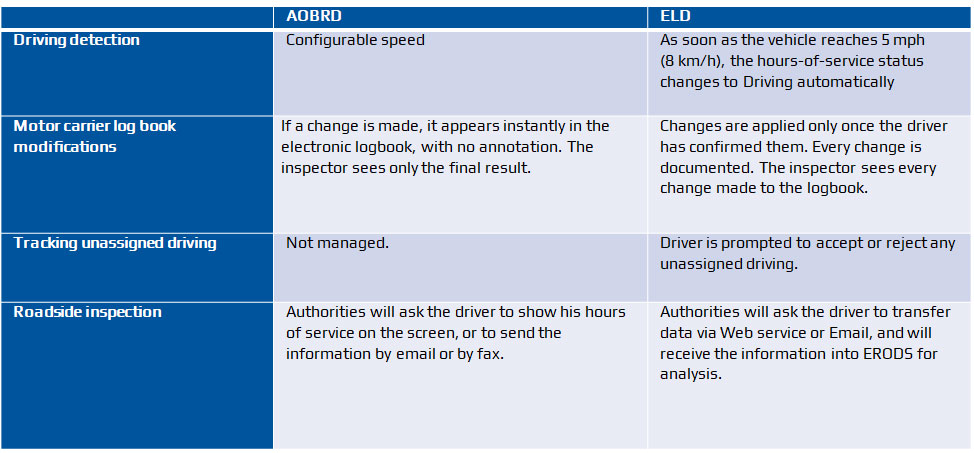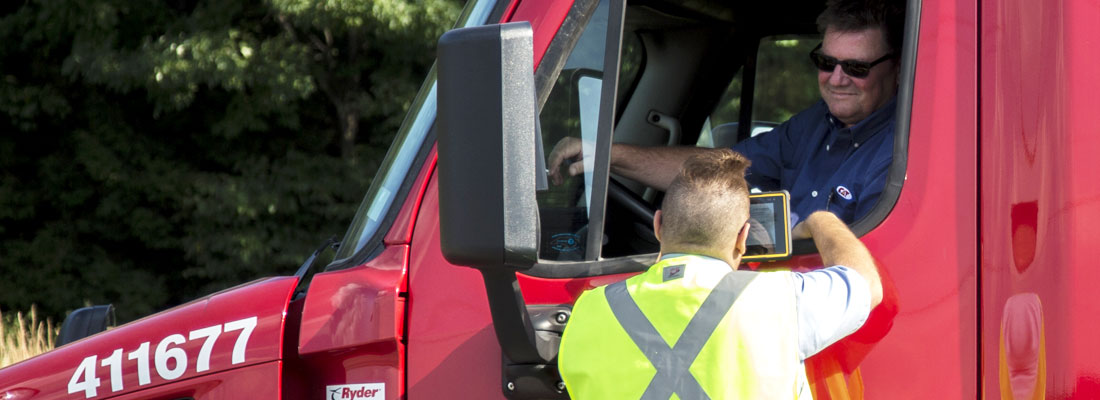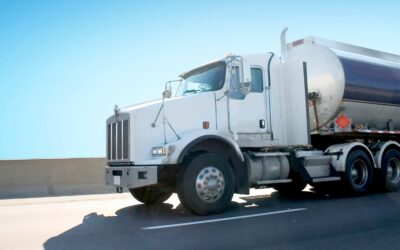Who must use ELDs?
Since December 18, 2017, all drivers of heavy-duty vehicles that travel in the United States and are not eligible for an exemption must use an Electronic Logging Device, or ELD. The ELD replaces the paper logs that were formerly used. No matter whether drivers are from a Canadian or even a Mexican company, they must comply with the regulation when traveling on American soil.
To be compliant, ELD systems must be registered on the FMCSA list and provide integral engine synchronization at all times.
Who may use AOBRDs?
Carriers who already owned Automatic On-Board Recording Devices (AOBRDs) in their truck fleets before the ELD Mandate came into effect may continue to use them until December 16, 2019, under the grandfather clause.
Furthermore, in early March, the FMCSA announced that carriers who invoke this clause are now authorized to install other AOBRDs aboard trucks added to their fleet.
Prior to this change in the law, it was only possible to transfer AOBRD devices to replacement trucks, and only provided the number of trucks in the fleet did not increase. That meant companies had to install ELDs when adding new vehicles. As a result, carriers wound up with mixed fleets with AOBRDs and ELDs. That is no longer the case since the regulation was revised.
Now, carriers that had already adopted AOBRDs may use loggers with the AOBRD configuration, whether in their current or future trucks, until mid-December 2019 and remain compliant. The only requirement is to be able to update installed loggers to ELD mode before the end of the transition period. The official FMCSA announcement is available in the FAQ section of the FMCSA website.
Why continue with AOBRDs?
This new authorization to install AOBRDs in an existing fleet simplifies things for drivers and operations managers. It is no longer necessary to manage a mixed fleet with different configurations. Everyone can use the same type of device.
Also, by using AOBRDs during the transition period, drivers can familiarize themselves with the technology. And when the time comes, the switch to ELD configuration will be simpler since the entire fleet will transition at the same time.
Although AOBRD and ELD configurations both refer to hours-of-service regulations, they differ from a technical standpoint in certain functions. The AOBRD mode is less restrictive on operations.

ELD Mandate recap
Here is a visual representation of the implementation timeline of the ELD rule.

The ISAAC solution supports AOBRD configuration for customers who owned this technology prior to the ELD Mandate coming into effect. ISAAC also offers a compliant, reliable ELD solution that is registered on the FMCSA list. If you want to know how ISAAC can help you keep your truck fleet compliant, contact us or request a meeting.
Download our free white paper on ELDs and AOBRDs: Guide to Help Carriers with Compliance.
References
https://www.fmcsa.dot.gov/sites/fmcsa.dot.gov/files/docs/regulations/hours-service/elds/74541/eldrulefaqs-mar2018.pdf
https://www.fmcsa.dot.gov/hours-service/elds/implementation-timeline










